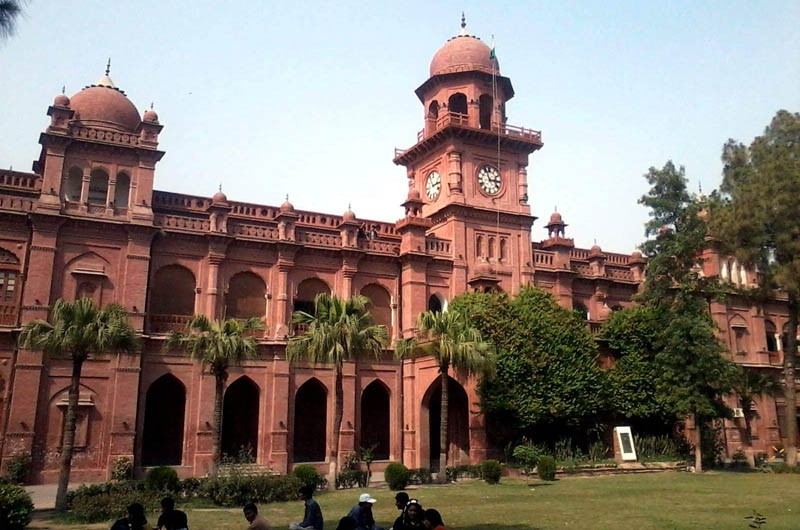
The HEC’s current one-goal-for-all approach has devalued domestic PhD degrees

Universities in underdeveloped, sparsely populated parts of the country are still struggling with basic issues, like Internet connectivity and attracting capable students. Yet, they are expected to have research programmes like universities in the country’s well-developed cities (Islamabad, Lahore, Karachi, Peshawar) that do not face the same challenges when it comes to attracting the best students.
Moreover, regardless of what their lofty vision and mission statements proclaim, most private universities in Pakistan are operated with a profit motive. They have little incentive to allocate resources in terms of building space, equipment, and funds for the conduct of research. For most of these universities, an empty room on campus is many times more valuable as an additional classroom for 40 students paying 40 tuition fees, than allocate that same space to a research lab.
The goals the HEC has set for universities according to its vision fail to acknowledge the great differences in capacities and student populations between very diverse universities. Its present motto is essentially one of "one goal, one vision for all universities."
Let us contrast this with the gold standard in higher education, the American higher education system. According to the latest statistics the US is home to approximately 4,700 colleges and universities. Most colleges/universities in the US can be classified into a handful of broad categories. Research universities are often medium to large sized, and rely on tuition, gifts and endowments for operation. Public universities receive funds from state taxpayers, and cannot afford to be too selective. These often have large and well-established research programmes. In our local context, the University of Punjab is an example of a public research university and LUMS an example of a private research university.
Non-research universities in the US are typically smaller in size, and are characterised by very few graduate course options, small MS programmes and no PhD programmes compared to their research-intensive counterparts. Research may still be conducted at these universities, but with much fewer resources. Many universities in Pakistan would have fallen in this category before the race to produce PhDs began.
Liberal Arts colleges typically offer only 4-year undergraduate programmes, mostly in arts, humanities, social sciences and the occasional computer science programmes. In Pakistan, the National College of Arts fits this description.
Then there are community colleges, which offer 2-year Associate Bachelors degrees and vocational training. Approximately 1700 of the total 4700 colleges and universities in the US, roughly 36 per cent, are community colleges. These correspond roughly to colleges offering common 2-year BA/BSc degrees.
In addition, there are professional schools, (e.g. Pakistani medical colleges), technical colleges: (UETs), military colleges (College of EME, Military College of Signals, Pakistan Navy Engineering College, College of Aeronautical Engineering), teacher’s colleges etc. These same colleges are also classified, based on other dimensions (public/private, small/medium/large).
There are two points to note: (1) The higher education system recognises that people have widely differing educational needs and abilities. (2) The higher education institutions are allowed to develop their different/unique strengths to cater to different segments of student population.
In Pakistan, over the last 14 years, the HEC has been steadily pushing all universities to "do research", and by extension start PhD programmes, regardless of their willingness or ability to sustain them. NUML and the Federal Urdu University are just two examples that have conjured up undergraduate and graduate CS/EE programmes that do not fit into their mission statements, but attract applicants. The effect is one of putting many universities into straitjackets.
The present HEC university rankings mix and compare apples and oranges. Since all HEIs are judged by the same criteria (as research universities), the result has been falsification of data universities send the HEC, interestingly much of that fabrication relates to KPIs related to the research output of universities. Some argue that the HEC’s goal of pushing universities to make efforts is not to attain perfection, but mere improvement. However, when these efforts are made to reach poorly identified goals, those efforts are a misallocation of limited resources. You can train a dog to become a guide dog for blind people, but it would make no sense to train a cat for the same task. You may succeed with one in a million cats, but for the most part it will be a wasted effort. Or, to use a beaten to death metaphor, presently the HEC is trying to fit a set of square, triangular, hexagonal and some round pegs into all round holes.
The HEC must recognise that the current one-goal-for-all approach will not work, and has led many universities to set up cardboard cutouts of PhD programmes, just to be able to check off boxes. This has devalued domestic PhD degrees, to the point that they are fast approaching worthlessness.
The HEC has to acknowledge that it is perfectly alright if not all universities are research universities, and allows them to decide what kind of institution they want to be. This will permit the HEC to take resources for research, which are already spread too thin, and deploy them where they will be made better use of. By all means, incentivise good-quality research in all disciplines at universities willing and capable of it, but do not penalise universities that aspire to function and serve society as non-research or other kinds of universities.